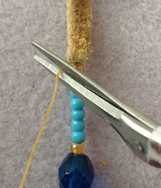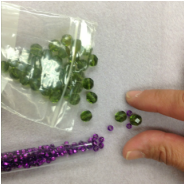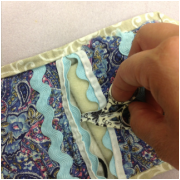Assessments
Using an authentic assessment is to ensure students are learning the language and evaluating learning in a valid and reliable way, lessons must include authentic assessments. O’Malley and Pierce (1996) describe an authentic assessment as multiple forms of assessment that reflect students’ learning, achievement, motivation, and attitudes on instructionally-relevant classroom activities (p. 4). Multiple-choice questions are not appropriate to TBLT lessons, because they do not measure the student’s true abilities of interaction and communication. An authentic assessment would assess students’ depth of learning by demonstrating what they have learned, such as students giving a lesson on what they learned to their class, demonstrating their skill of communication.
These rubrics are reliable, because it will depend on student’s output to determine how high or low the score. Raters will each have a rubric to score the presentation and discuss the presentation and share their scores to make sure the criteria have been met. Validity is established for this performance assessment, because the data that will be compiled through comments and scoring will be used to determine how well teachers have prepared students to speak, interact and present material learned.
These rubrics are reliable, because it will depend on student’s output to determine how high or low the score. Raters will each have a rubric to score the presentation and discuss the presentation and share their scores to make sure the criteria have been met. Validity is established for this performance assessment, because the data that will be compiled through comments and scoring will be used to determine how well teachers have prepared students to speak, interact and present material learned.
Activity RubricThe Activity Rubric will assess how well the lesson was presented, group participation and peer feedback of beading project. Teachers will look at four column areas: usage of props, engagement of lesson, teamwork and reflection of presentations. How to use the rubric for Activity Rubric: 1. Usage of Props: This will assess time preparation of activity. 2. Engagement of Lesson: This will assess if student engage and communicate with class during entire lesson 3. Teamwork: Students will be assessed on group participation during presentation. 4. Reflection of student presentation: Student will journal a reflection of each presentation and asks a question, give feedback. High scores over all will equal 16 points.
|
Interaction RubricThe Interaction Competency Rubric will assess the interaction and communication of students. Teachers will look at three area modes: helping language, speaking with elders and staying in Ahtna. How to use the rubric for Interaction Competency: 1. Helping language column: There will be a checklist for teachers to measure if students have significant output of 8 or beyond helping language to achieve high scores. 2. Speaking to elder’s column: Will assess student’s ability to ask and answers elders. 3. Staying in the Ahtna column: Will demonstrate if student was able to stay in language for the entire presentation. High scores overall will equal 12 points.
|
Linguistic RubricThe Linguistic Competency Rubric will assess the language that has been taught to construct a beaded necklace. Teachers will look at four area modes: noun usage, verb usage, counting and colors. How to use the rubric for Linguistic Competency: 1. Noun Usage column: There will be a checklist for teachers to measure students have achieved 12 or beyond correct usage of sewing nouns. 2. Verb Use column: Teachers will use a checklist to measure student’s usage of correct 8 or beyond sewing verbs. 3. Counting column: Students will demonstrate counting to ten for high scores. 4. Colors column: Students who recognizes 6 colors will receive high scores. High scores over all will equal 16 points.
| ||||||||||||||||||



